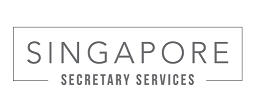Singapore is coming down hard on money laundering and terrorism financing activities. Every Singapore company should have processes in place to deal with such matters. Every company should have an anti-money laundering framework in place.
Creating an Anti-Money Laundering (AML) framework for a Singapore company involves a series of steps to ensure compliance with local regulations, safeguard against illicit activities, and maintain the company’s reputation. Here’s a structured approach to developing such a framework:
1. Understand the Regulatory Requirements
-Know the Laws: Familiarize yourself with Singapore’s primary AML regulations, such as the Corruption, Drug Trafficking and Other Serious Crimes (Confiscation of Benefits) Act (CDSA), the Terrorism (Suppression of Financing) Act (TSOFA), and the guidelines issued by the Monetary Authority of Singapore (MAS).
– MAS Notices: For financial institutions, MAS issues specific AML/CFT (Countering the Financing of Terrorism) notices, such as MAS Notice 626 for banks.
2. Risk Assessment
– Company Risk Profile: Evaluate your company’s exposure to money laundering risks based on factors such as the nature of the business, types of clients, and geographical locations of operations.
– Customer Risk Assessment: Classify customers based on their risk profiles (e.g., high-risk countries, politically exposed persons (PEPs), etc.).
Product and Service Risk: Assess the risks associated with different products and services offered by your company.
3. Develop AML Policies and Procedures
– Customer Due Diligence (CDD): Implement robust CDD procedures, including:
i) Know Your Customer (KYC): Procedures for identifying and verifying customers.
ii) Enhanced Due Diligence (EDD): Additional checks for high-risk customers.
– Ongoing Monitoring: Establish procedures for continuous monitoring of customer transactions to detect suspicious activities.
– Record-Keeping: Ensure that all transaction records and customer identification documents are retained for at least five years.
– Suspicious Transaction Reporting (STR): Define a process for identifying, reporting, and managing suspicious transactions to the relevant authorities (e.g., the Suspicious Transaction Reporting Office (STRO) in Singapore).
4. Establish an AML Compliance Function
– Appoint an AML Officer: Designate a senior officer as the AML Compliance Officer responsible for overseeing the implementation and maintenance of the AML program.
– Compliance Team: Depending on the company size, consider forming an AML compliance team to support the AML officer.
5. Training and Awareness
– Regular Training: Conduct regular AML training sessions for employees, especially those in high-risk roles (e.g., client-facing staff).
– Update on Regulations: Keep the team updated on any changes in AML regulations and practices.
6. Internal Controls and Audit
– Internal Controls: Develop internal controls to ensure compliance with AML policies, including transaction monitoring systems and audit trails.
– Independent Audit: Conduct periodic independent audits of the AML framework to identify gaps and areas for improvement.
7. Reporting and Record Keeping
– Maintain Records: Keep detailed records of CDD, transactions, and internal reports for a minimum of five years.
– Reporting to Authorities: Implement procedures for reporting to MAS or STRO as required by law.
8. Regular Review and Update
– Review Framework: Regularly review and update the AML framework to reflect changes in regulations, business activities, and risk profiles.
– Respond to Regulatory Changes: Quickly adapt the AML framework to comply with any new regulatory requirements or guidelines.
9. Technology and Automation
– AML Software: Consider using AML compliance software to automate customer screening, transaction monitoring, and regulatory reporting.
– Data Analytics: Leverage data analytics to identify patterns and anomalies that may indicate money laundering activities.
10. Documentation and Reporting
– AML Policy Document: Create a comprehensive AML policy document outlining all procedures, controls, and responsibilities.
– Annual Report: Prepare an annual report on AML activities, findings, and any remedial actions taken.
Key Considerations:
i) Adaptation to Business Needs: Tailor the framework to fit the specific needs and size of your company.
ii) Regulatory Liaison: Maintain open communication with MAS and other relevant authorities to stay compliant.
iii) Culture of Compliance: Foster a corporate culture that emphasizes the importance of AML compliance.
By following these steps, you can establish a robust AML framework that helps protect your company from money laundering risks and ensures compliance with Singaporean regulations. If you need to establish an effective AML framework, you may contact the Raffles Corporate Services compliance team at hello@rafflescorporateservices.com.
Yours sincerely,
The editorial team at Raffles Corporate Services







Leave A Comment